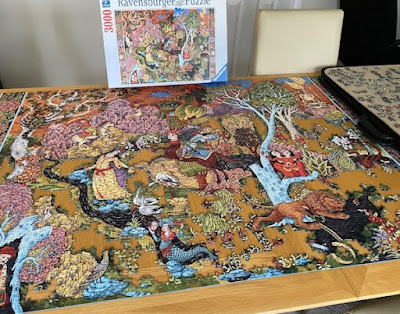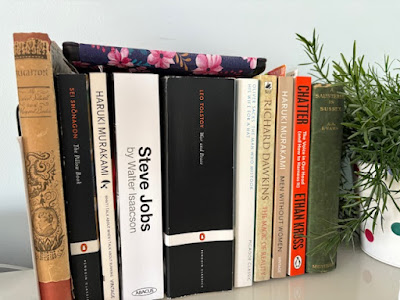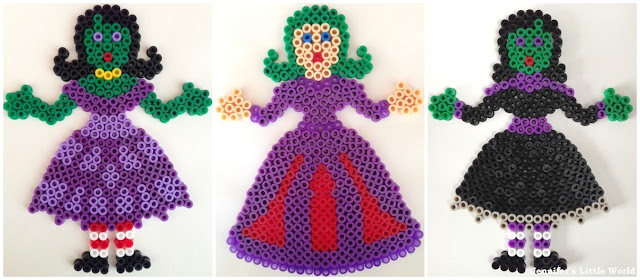Recently I've been making really good progress working through my to be read pile, and part of that has been becoming much more strict about the books that make it on there in the first place. I've become more inclined to put a book aside if it isn't grabbing me within the first few chapters, and I've been ruthless with some of the free books that had been piling up on my Kindle.
It's taken me a good number of years of reading to work out what it is about a book that makes me love it! Here are some of the things that I've narrowed it down to:
Female authors and a female main character
Until a few years ago I never really thought about whether the book I was reading was written by a man or a woman. But now I've realised that although I do enjoy many books written by male authors, it's usually the female ones that really grab me. I find that they tend to focus more on relationships and characters rather than just what is happening in the plot. There is often more observational detail, and more focus a character's inner thoughts and feelings.
Plenty of description
I love books that really immerse me in a place, whether it's somewhere familiar to me or somewhere that I can learn more about. I enjoy detailed descriptions, and I tend more towards a rural or coastal setting rather than a city. For example - Where the Crawdads Sing (Delia Owens), The Paper Palace (Miranda Cowley Heller).
A twist, but not too obvious
Twists in a book are great, but I don't want to spend the whole time trying to work it out. I want to concentrate on the story, not be looking for hidden details and double meanings that might or might not end up being important. My favourite book of all time is like that - Rebecca (Daphne du Maurier) and I also enjoyed We Were Liars (E. Lockhart). But the best twist in a book that I've read comes in I Let You Go (Claire Mackintosh).
An element that leaves me thinking
I'm especially drawn to speculative fiction, stories that are set just a few years in the future but where things have changed either as a result of society or technology. Some of my favourite examples are The Handmaid's Tale (Margaret Atwood), Klara and the Sun (Kazuo Ishiguru), The School for Good Mothers (Jessamine Chan) and Never Let Me Go (Kazuo Ishiguru). I like to be left with something unsettling to ponder.
 |
| Photo credit Zooey Li via Unsplash |
Unreliable narrators
I enjoy books that are narrated by a character that you can't be sure is telling the complete truth, and where you have to read between the lines to work out what is really going on. Many of Kazuo Ishiguru's books fall in to this category, and one of my favourites is The Remains of the Day. I also like books that are written as a stream of consciousness, like I Capture the Castle (Dodie Smith). Rebecca ticks this box too - so much of the book is things that don't actually happen, they are just imagined by the narrator.
Booker Prize shortlisted books and winners
For some reason, Booker Prize shortlisted books and winners always seem to appeal to me. Recently I've loved Orbital (Samantha Harvey, winner in 2024) and Great Circle (Maggie Shipstead, shortlisted in 2021). I would love to have the funds to be able to buy the Booker Prize shortlist every year when it's announced! World of Books, where I buy second hand books when I'm after a specific title, even has a dedicated section on their website for previous Booker prize books which is very handy.
A nice cover
Yes I know, I'm shallow! But the cover of a book does make a difference to me when I'm browsing, especially in the library or a charity shop when there is less money changing hands and less pressure to pick the perfect book. Covers are very carefully chosen by a publisher, and I can usually tell from a cover what type of book it is. Or at least I know which ones to avoid - like those with gory pictures!
What do you find grabs you in a book?


































